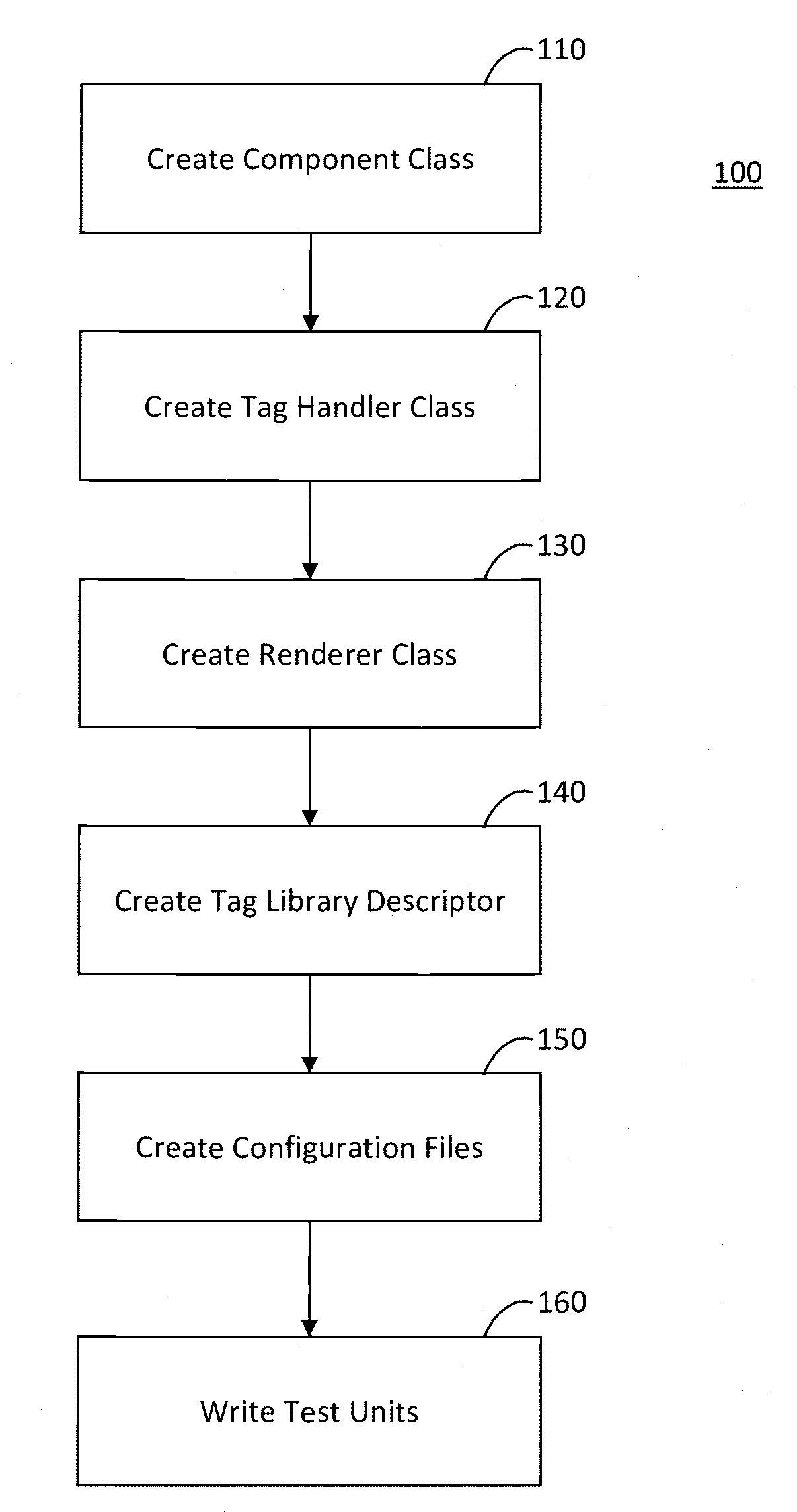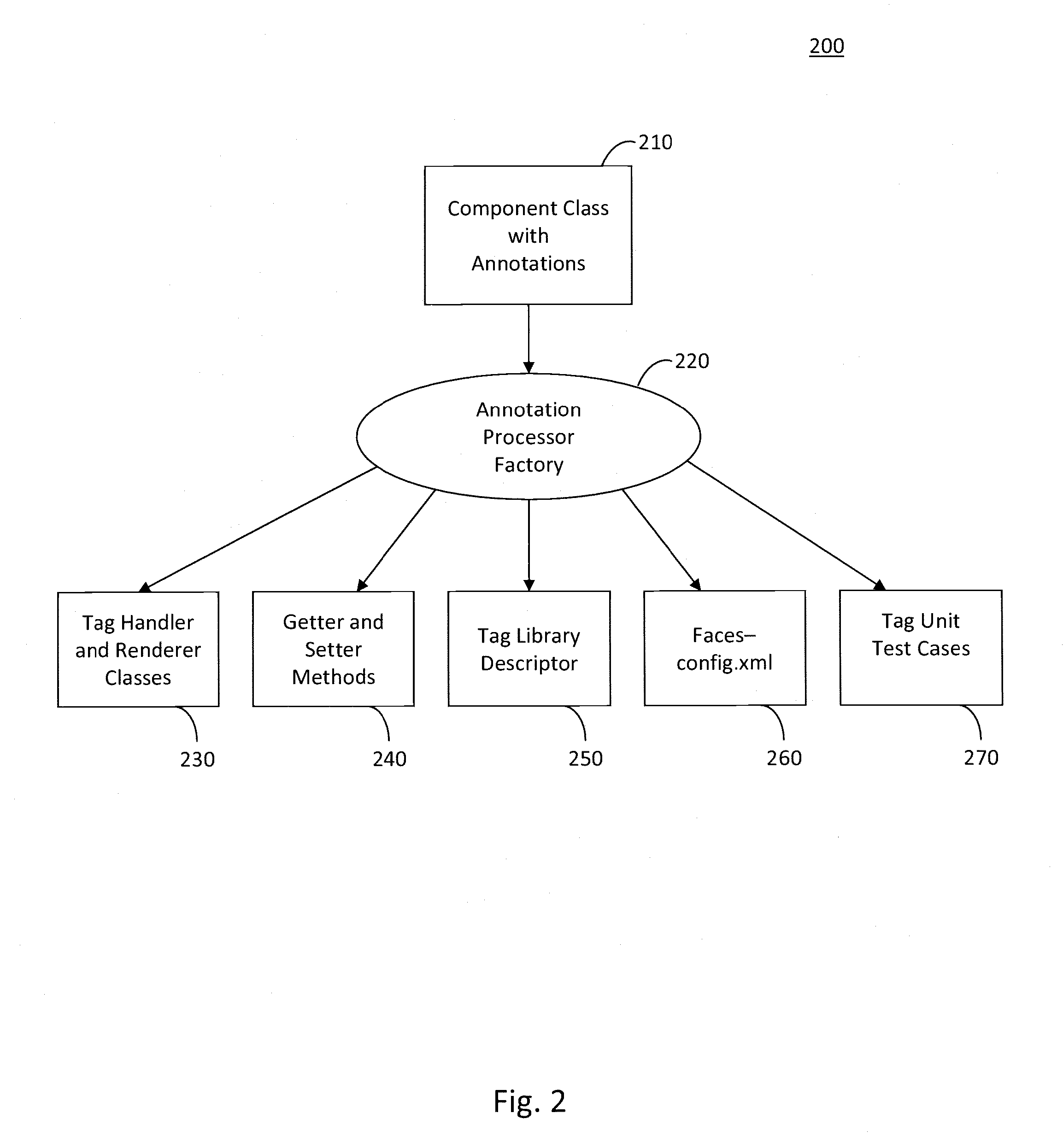System and method for using annotations to automatically generate a framework for a custom javaserver faces (JSF) component
- Summary
- Abstract
- Description
- Claims
- Application Information
AI Technical Summary
Benefits of technology
Problems solved by technology
Method used
Image
Examples
Embodiment Construction
[0013]Referring to FIG. 1, an exemplary method 100 for developing a custom JavaServer Faces (JSF) component is illustrated according to various aspects of the invention. JSF technology may be used, for example, to simplify various tasks related to building JavaServer applications, web applications, or other suitable applications. For instance, among other things, JSF may provide various reusable components (e.g., user interface components, data conversion components, etc.), which can be connected to various application data sources or application program interfaces for representing components, managing component states, handling client events, invoking server-side event handling, validating inputs, or navigating pages, among others. Further, JSF provides a framework for creating, extending, modifying, or otherwise customizing various aspects of JSF components or sub-components (e.g., a custom validation method may be developed for any given component, instead of requiring implementa...
PUM
 Login to View More
Login to View More Abstract
Description
Claims
Application Information
 Login to View More
Login to View More - R&D
- Intellectual Property
- Life Sciences
- Materials
- Tech Scout
- Unparalleled Data Quality
- Higher Quality Content
- 60% Fewer Hallucinations
Browse by: Latest US Patents, China's latest patents, Technical Efficacy Thesaurus, Application Domain, Technology Topic, Popular Technical Reports.
© 2025 PatSnap. All rights reserved.Legal|Privacy policy|Modern Slavery Act Transparency Statement|Sitemap|About US| Contact US: help@patsnap.com



